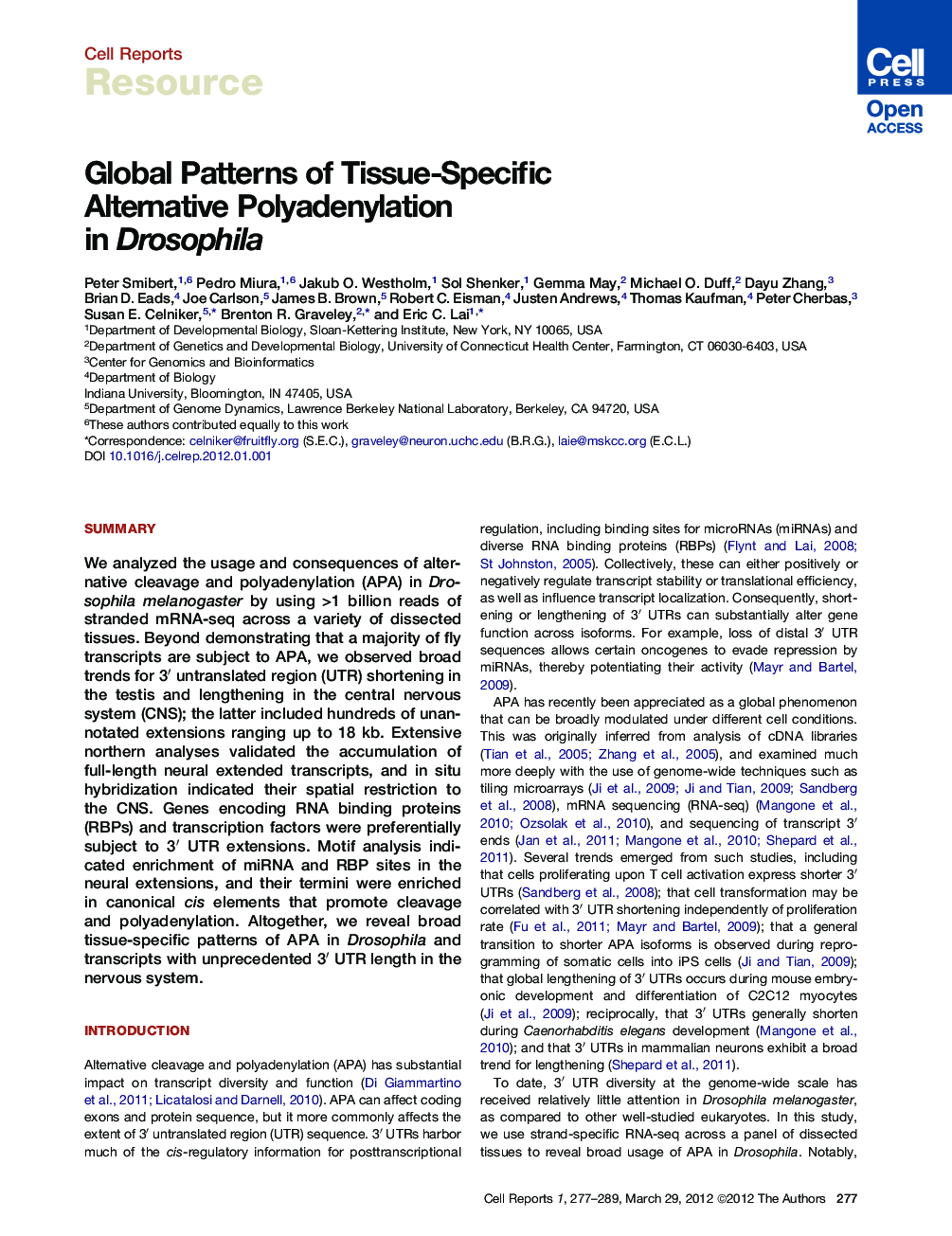| Article ID | Journal | Published Year | Pages | File Type |
|---|---|---|---|---|
| 2042615 | Cell Reports | 2012 | 13 Pages |
SummaryWe analyzed the usage and consequences of alternative cleavage and polyadenylation (APA) in Drosophila melanogaster by using >1 billion reads of stranded mRNA-seq across a variety of dissected tissues. Beyond demonstrating that a majority of fly transcripts are subject to APA, we observed broad trends for 3′ untranslated region (UTR) shortening in the testis and lengthening in the central nervous system (CNS); the latter included hundreds of unannotated extensions ranging up to 18 kb. Extensive northern analyses validated the accumulation of full-length neural extended transcripts, and in situ hybridization indicated their spatial restriction to the CNS. Genes encoding RNA binding proteins (RBPs) and transcription factors were preferentially subject to 3′ UTR extensions. Motif analysis indicated enrichment of miRNA and RBP sites in the neural extensions, and their termini were enriched in canonical cis elements that promote cleavage and polyadenylation. Altogether, we reveal broad tissue-specific patterns of APA in Drosophila and transcripts with unprecedented 3′ UTR length in the nervous system.
Graphical AbstractFigure optionsDownload full-size imageDownload as PowerPoint slideHighlights► >1 billion stranded RNA-seq reads generated across a panel of Drosophila tissues ► Broad trends of 3′ UTR shortening in testis and lengthening in CNS observed ► CNS 3′ UTR extensions subject 100 s of genes to tissue-specific posttranscriptional control ► CNS 3′ UTR extensions enriched for genes encoding nucleic-acid-binding proteins
